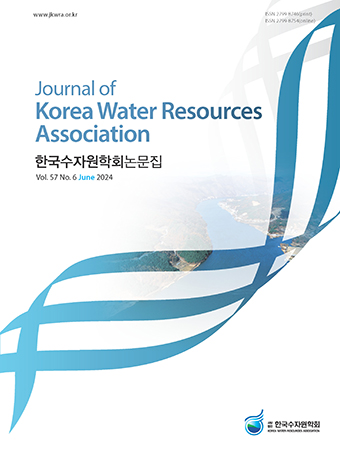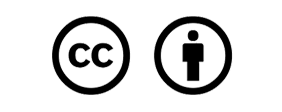Research Article
Ahn, J.C., Park, C.M., and Koo, J.Y. (2005). "Modeling and application of chlorine bulk decay in drinking water distribution system." Journal of Korean Society of Water and Wastewater, Vol. 19, No. 4, pp. 487-496.
Bahk, G.J., Oh, D.H., Ha, S.D., Park, K.H., Joung, M.S., Chun, S.J., Park, J.S., Woo, G.J., and Hong, C.H. (2005). "Quantitative microbial risk assessment model for Staphylococcus aureus in Kimbab." Korean Journal of Food Science and Technology, Vol. 37, No. 3, pp. 484-491.
Boccelli, D.L., Tryby, M.E., Uber, J.G., and Summers, R.S. (2003). "A reactive species model for chlorine decay and THM formation under rechlorination conditions." Water Research, Vol. 37, No. 11, pp. 2654-2666.
10.1016/S0043-1354(03)00067-812753843Brinkman, N.E., Fout, G.S., and Keely, S.P., (2017). "Retrospective surveillance of wastewater to examine seasonal dynamics of enterovirus infections." mSphere, Vol. 2, No. 3, e00099-17. doi: 10.1128/mSphere.00099-17.
10.1128/mSphere.00099-1728630939PMC5471348Hamouda, M.A., Anderson W.B.D., Van Dyke, M.I., Douglas, I,P., McFadyen, S.D., and Huck, P.M. (2016). "Scenario-based quantitative microbial risk assessment to evaluate the robustness of a drinking water treatment plant." Water Quality Research Journal of Canada, Vol. 52, No. 2, pp. 81-96.
10.2166/wqrjc.2016.034Jeong, C. (2008). Chlorine residual and DBPs control program development in the distribution system. Master's Thesis, Kookmin University, pp. 28-29.
Jeong, G., Kang, D., and Hwang, T. (2022). "Reaction coefficient assessment and rechlorination optimization for chlorine residual equalization in water distribution networks." Journal of Korea Water Resources Association, Vol. 55, No. S-1, pp. 1197-1210.
Kim, D.H., Lee, D.J., Kim, K.P., Bae, C.H., and Joo, H.E. (2010). "Computing the dosage and analysing the effect of optimal rechlorination for adequate residual chlorine in water distribution system." Journal of Korean Society of Environmental Engineers, Vol. 32, No. 10, pp. 916-927.
Kim, J.K., and Han, J.A. (2014). "Rechlorination for residual chlorine concentration equalization in distribution system." Journal of Korean Society of Water and Wastewater, Vol. 28, No. 1, pp. 91-101.
10.11001/jksww.2014.28.1.91Kim, K., Hyung, J., Seo, H., Shin, H., and Koo, J. (2017). "Development of an optimal operation model of residual chlorine concentration in water supply system." Journal of Korean Society of Water and Wastewater, Vol. 31, No. 6, pp. 587-597.
10.11001/jksww.2017.31.6.587Lansey, K., Pasha, F., Pool, S., Elshorbagy, W., and Uber, J. (2007). "Locating satellite booster disinfectant stations." Journal of Water Resources Planning and Management, Vol. 133, No. 4, pp. 372-376.
10.1061/(ASCE)0733-9496(2007)133:4(372)Lee, M.Y., Park, S.J., Cho, E.J., Park, S.J., Han, S.H., and Kwon, O.S. (2013). "Health risk assessment of Cryptosporidium in tap water in Korea." Korean Society of Environmental Health, Vol. 39, No. 1, pp. 32-42.
10.5668/JEHS.2013.39.1.32Lee, S., Wilson, A.M., Cooksey, E., Boccelli, D., and Verhougstraete, M.P. (2022). "Exploring vulnerable nodes, impactful viral intrusion sites, and viral infection risk reductions offered by chlorine boosters in municipal drinking water networks." Journal of Water Resources Planning and Management, Vol. 148, No. 9, pp. 1-9.
10.1061/(ASCE)WR.1943-5452.0001589Michigan State University (MSU) (2011). United States of America, accessed 10 October 2023, <https://qmrawiki.org/>.
Moeini, M., Sela, L., Taha, A.F., and Abokifa, A.A. (2023). "Bayesian optimization of booster disinfection scheduling in water distribution networks." Water Research, Vol. 242, 120117.
10.1016/j.watres.2023.12011737393806Ostfeld, A., and Salomons, E. (2006). "Conjunctive optimal scheduling of pumping and booster chlorine injections in water distribution systems." Engineering Optimization, Vol. 38, No. 3, pp. 337-352.
10.1080/03052150500478007Parks, S.L.I., and VanBriesen, J.M. (2009). "Booster disinfection for response to contamination in a drinking water distribution system." Journal of Water Resources Planning and Management, Vol. 135, No. 6, pp. 502-511.
10.1061/(ASCE)0733-9496(2009)135:6(502)Poduska, R.A., and Hershey, D. (1972). "Model for virus inactivation by chlorination." Water Pollution Control Federation, Vol. 44, No. 5, pp. 738-745.
Prasad, T.D., Walters, G.A., and Savic, D.A. (2004). "Booster disinfection of water supply networks: Multiobjective approach." Journal of Water Resources Planning and Management, Vol. 130, No. 5, pp. 347-376.
10.1061/(ASCE)0733-9496(2004)130:5(367)Shafiqul Islam, M., Sadiq, R., Rodriguez, M.J., Najjaran, H., and Hoorfar, M. (2014). "Reliability assessment for water supply systems under uncertainties." Journal of Water Resources Planning and Management, Vol. 140, No. 4, pp. 468-479.
10.1061/(ASCE)WR.1943-5452.0000349Teunis, P.F.M., Xu, M., Fleming, K.K., Yang, J., Moe, C.L., and LeChevallier, M.W. (2010). "Enteric virus infection risk from intrusion of sewage into a drinking water distribution network." Environmental Science & Technology, Vol. 44, No. 22, pp. 8561-8566.
10.1021/es101266k20968297Thurston-Enriquez, J.A., Haas, C.N., Jacangelo, J., and Gerba, C.P. (2003). "Chlorine inactivation of adenovirus type 40 and feline calicivirus." Applied and Environmental Microbiology, Vol. 69, No. 7, pp. 3979-3985.
10.1128/AEM.69.7.3979-3985.200312839771PMC165174- Publisher :KOREA WATER RESOURECES ASSOCIATION
- Publisher(Ko) :한국수자원학회
- Journal Title :Journal of Korea Water Resources Association
- Journal Title(Ko) :한국수자원학회 논문집
- Volume : 57
- No :4
- Pages :277-287
- Received Date : 2024-03-14
- Revised Date : 2024-04-05
- Accepted Date : 2024-04-09
- DOI :https://doi.org/10.3741/JKWRA.2024.57.4.277



 Journal of Korea Water Resources Association
Journal of Korea Water Resources Association









